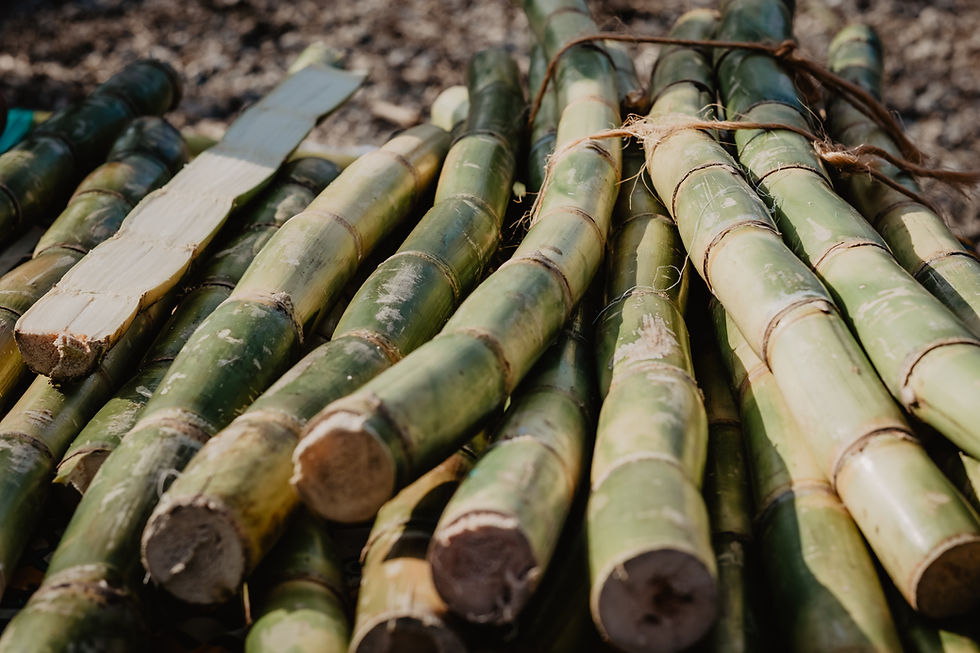An Ode to Taiwanese Cinnamon (阿里山土肉桂)
- Clarissa Wei

- Aug 24, 2021
- 3 min read
In much of the Western world, cinnamon is grated and added liberally to desserts and swirled into breads. But in Taiwan, it’s used as a subtle sweetening agent in savory dishes, like a counterweight. It’s an accent, not a main ingredient, and this is a theme that runs throughout the region. In neighboring China, cassia (Cinnamomum cassia) is also used as a subtle pop of flavor. The bark is used in Chinese medicine, which supposedly clears heat in the liver and sharpens eyesight. It is also used as a flavoring in spicy, anise-heavy soups, or grounded into powder and ingested for medicinal purposes.
There are over 250 species of cinnamon around the world and the versatility is truly incredible. But in Taiwan, it’s a bit of an underdog in the broad repertoire of the cuisine.
Unlike ceylon cinnamon, the dominant varietal used in Western cooking and baking, Taiwanese cinnamon (Cinnamomum osmophloeum, 阿里山土肉桂) is known for its aromatic leaves, not its bark. Taste-wise, it’s significantly more mild than ceylon, and less heavy on the spicy notes with wafts of vanilla. I also find the scent uncannily similar to red licorice candy. In Taiwan, cinnamon is used more for savory dishes than sweet ones. Because it’s in leaf form, it’s much more approachable and can be chopped into pieces and thrown into a stir-fry, or used in a long, hearty bone broth stew accented with star anise. It’s also harvested en masse, crushed, and distilled into an essential oil—a product said to relieve stress and tension.
When I first rented my plot of land on the outskirts of Taipei my strategy was to pop into the closest nursery and ask them what local, edible Taiwanese plants they had available. An enthusiastic old man who worked at the shop began bringing out small pots of citruses, and right when I was about to leave with a handful of them and check out at the cashier— as a sudden afterthought— the man lugged out a small, three-inch tall evergreen seedling with just four leaves.
“Cinnamon,” he said. I took a closer look at the tag: an indigenous Taiwanese cinnamon from Alishan, a mountainous nature reserve in the south-central section of the country. While the plant was tiny, it smelled divine.
So I bought the plant, brought it home to my allotment, dug a hole for it, watered it, and cared for it. My plot, located just 20 minutes outside of the outskirts of New Taipei City, is a tad bit too hot for a higher altitude, shade-loving cinnamon plant. But over the last couple of months during its residency, it’s grown a couple of significant inches and has a new cluster of growth. It’s quite elegant. The leaves are a glossy forest green hue, they’re shaped like soft ovals with a vertical, thin chalky white line running down its center.
To be perfectly honest, I haven’t done much with its growing leaves since I bought it, except pinch one off every now and then, crush it between my fingers, and inhale its delightfully sweet aroma.The leaves can be quite useful too; they are often made into essential oil, lauded for their mosquito-repelling properties.
My cinnamon tree is still very much a seedling right now, though mildly bushier than when I bought it. But the very fact that I possess one brings me a great amount of joy. One day, if the conditions allow, it might grow into a full-fledged, enormous tree. And I’d be the proud steward of a colossal, never-ending bouquet of fragrant Taiwanese cinnamon.
Editors note: prior to publication Clarissa Wei's cinnamon tree went to season the dishes in the sky. Cinnamomum osmophloeum is very particular about its growing conditions which is why there isn't much use of it outside of regional Taiwanese cooking. We are publishing this piece in memoriam of her sapling and hope she is able to procure a new one soon.

Clarissa Wei is an American freelance journalist based in Taipei. She is also currently working on a cookbook of Taiwanese cookery. You can follow her on Twitter @dearclarissa and you can follow her farming project on Instagram @arcadiafarm.tw











